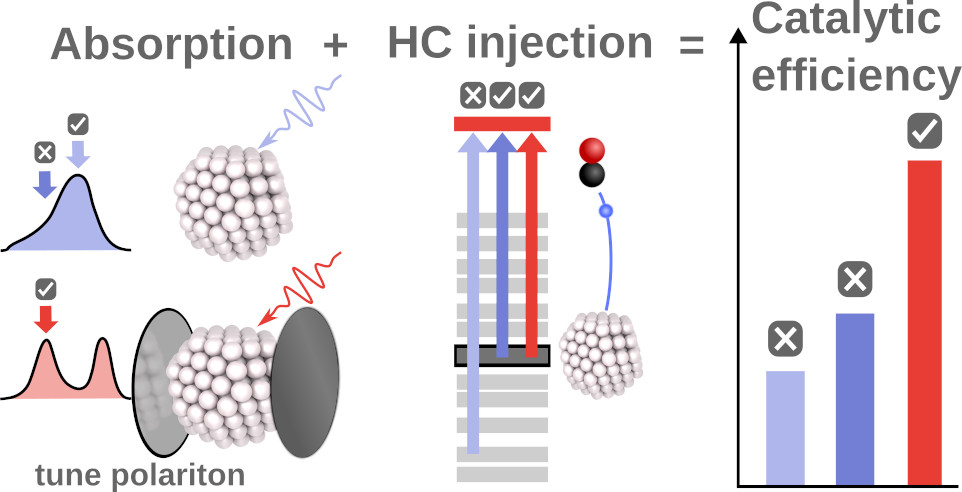Boosting Plasmonic Catalysis
Tailoring absorption and injection efficiency in plasmonic catalytic cells using electromagnetic environments
Most reactions are controlled via heat, pressure, or solvent and would require an enourmous amount of energy to reach a desired outcome. Catalysts can lower the barrier that needs to be overcome, yet considerable heat remains necessary for e.g. ammonium reactions. Nanoplasmonic particles are excellent light absorbers and can convert this energy into free charge carriers and heat that can both be used to trigger reactions. Especially exciting are recent approaches to combine electrodynamics with surface chemistry in order to maximize the optical interplay, tune resonance into perfect alignment, and thus pave a way to efficient and near universal photo-catalysis – a pillar of green chemistry.
Starting point for the interested reader: (Fojt et al., 2024)

References
2024
- Controlling Plasmonic Catalysis via Strong Coupling with Electromagnetic ResonatorsNano Letters, 2024